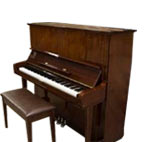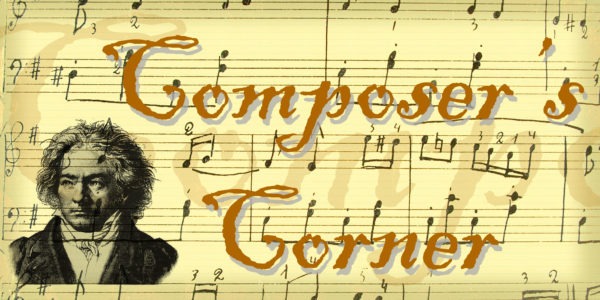
Elisabeth Lutyens
(July 09, 1906 – April 14, 1983)
Working completely in isolation from European trends, Lutyens developed her own innovative style of serialism in the late 1930’s. Continuing amid almost total neglect in England, she eventually became known for an exceptional ability at setting texts, achieving a highly objective and original constancy of form while maintaining deeply emotional qualities.
The daughter of an architect, she entered the Ecole Normale in Paris in 1922, and then studied composition and viola at the Royal College of Music.
Her first remarkable breakthroughs were with the rigorously chromatic “Second String Quartet, Op. 5/5” (1938), the “String Trio, Op. 5/6” (1939) and the serialist “Chamber Concerto No. 1” (1939). These works were so original in structure and sound as to be incomprehensible to the musical circles of that time.
Lutyens discovered an original 12-tone harmonic style in her magical setting of Rimbaud’s “O saisons, o châteux” (1946) scored for the sensuous combination of mandolin, guitar, harp and string orchestra. She also wrote a chamber opera entitled “The Pit” (1947) about trapped miners.
Working despite a climate that found her advanced techniques even morally questionable (!), she created in strict serial language a motet “Excerpta tractus-logico philosophici” (1952) on words of Ludwig Wittgenstein; however, her chamber opera in seven scenes “Infidelio” (1954) about a suicide after a failed love affair, and the brilliant cantata “De amore” (1957) were not to be performed until the 1970’s. Needless to say, this was a very difficult time in her life, as later revealed in her autobiography “A Goldfish Bowl” (London, 1972) which is also the title of her ballad opera, Op. 102 (1975).
Her work continued to explore dramatic and structural aspects in the next decade with her “Symphonies” (1961) for piano, wind and percussion, the atmospheric “Catena” (1961) for soprano, tenor and 21 instruments, the startling “Music for Orchestra II” (1962) with its large clarinet and saxophone groups, and the refined yet lyrical style of “The Valley of Hatsu-se” (1965). Lutyens also began writing extensively for the radio and cinema.
Lutyens began to mix the atmospheric with the abstract, the repetitive with reduced gestures, the colorful with the starkly simple in such pieces as “Akapotik Rose” (1966), “And Suddenly It’s Evening” (1966), and “The Essence of Our Happinesses” (1968) (Abu-Yasid, Donne, Rimbaud).
The “charade” and parody “Time Off?-Not a Ghost of a Chance!” (1967-68) with a text of riddles, puns and musings on time and chance and the history of mankind was another departure for Luytens, and her powerful opera “The Numbered” (1965-67), about a society in which each person knows his and her own time of death but must not tell anyone else, is one of her best works. Her opera “Isis and Osiris” (1969-70) also concerns life and death and evokes an ancient, ritualistic time with its repetitive figures and block harmonies.
Luytens created free notations in the “Plenum I – IV” series (1972-74), and inspired vocal works with such titles as “Dirge for the Proud World” (1971), “Counting Your Steps” (1972) on an African text, “Elegy of the Flowers” (1978), and “The Roots of the World” (1979). Her last works reveled in imagery – “Wild Decembers” (1980) and “Gone Like A Sea-Covered Stone” (1981) both for chamber orchestra – with a touch of humor – “Encore – Maybe” (1982) for piano. ~ Blue Gene Tyranny, All Music Guide











Leave a reply